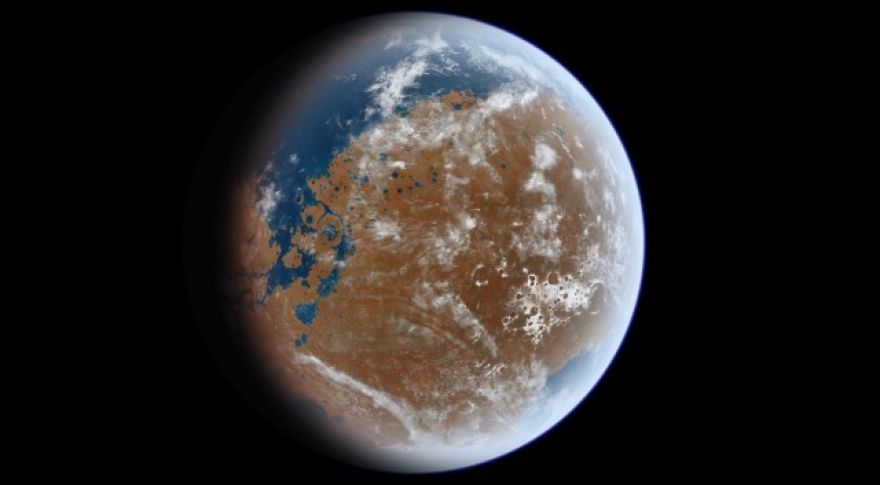
NASA proposes building artificial magnetic field to restore Mars’ atmosphere
The Mars of today is a cold, dry husk with no life as far as we can tell. Even if there is still some hearty microorganism living on the Red Planet, it’s not suitable for human habitation without a great deal of protective equipment. A talk given at the recent Planetary Science Vision 2050 Workshop presented a potential way to make Mars more habitable by giving it an artificial magnetic field. This could protect human residents from radiation and bring back some of the planet’s ancient oceans.
Data from missions like NASA’s and the ESA’s Mars Express supports the idea that Mars was once more Earth-like.
Even if we were to dump more atmosphere into Mars, it would just be stripped away again. It’s not clear how we would go about restoring Mars’ magnetic field, but we might be able to . According to NASA Planetary Science Division director Jim Green, a powerful magnetic dipole positioned at the Mars L1 Lagrange Point could potentially deflect the solar wind like a natural magnetic field. The L1 Lagrange Point is a location of gravitational equilibrium that ensures the structure remains between Mars and the sun.
Green notes that advances coming out of plasma physics could allow for the future development of inflatable structures that can generate a magnetic dipole of 1 or 2 tesla. That could en enough to shield Mars against the solar wind, and it wouldn’t need to be anything near as large as the planet itself.
The Planetary Science Division worked with scientists from Ames Research Center, the Goddard Space Flight Center, and a number of universities to run simulations of this scenario (). The team found that a magnetic shield would allow Mars’ atmosphere to find a new equilibrium. Currently, it has stabilized at roughly 1% the density of Earth’s atmosphere, thanks to the release of gases from internal pockets. With the shield, that could increase by several times and allow the surface temperature to rise to an average of 4 degrees Celsius (7 degrees Fahrenheit).
The thicker, warmer atmosphere could release the frozen carbon dioxide in the Martian ice caps, leading to even more temperature increases from the greenhouse effect. The frozen water hiding under the surface could also thaw and fill some of those ancient basins. Not only would Mars be warmer, but human residents wouldn’t have to worry about high radiation levels, or, you know, suffocating the instant they step outside.
Green and his colleagues admit this idea is “fanciful,” but it’s not completely outside the realm of possibility. We might have the ability to build a magnetic shield for Mars in the next few decades.